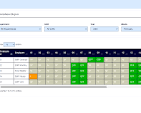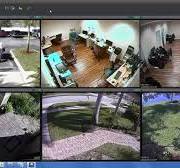Employee Attendance System: Streamlining Workforce Management
In today’s fast-paced business environment, efficient management of employee attendance is crucial for ensuring productivity and smooth operations. An effective employee attendance system plays a key role in tracking and managing workforce attendance, enabling organizations to streamline processes, enhance accountability, and optimize resource utilization.
Traditional methods of manual attendance tracking, such as paper-based registers or spreadsheets, are not only time-consuming but also prone to errors and manipulation. This is where automated employee attendance systems come into play, offering a reliable and accurate solution for recording and monitoring employee attendance.
Modern employee attendance systems leverage advanced technologies such as biometric recognition, RFID cards, mobile apps, and cloud-based software to simplify the process of capturing and analyzing employee attendance data. By eliminating manual data entry and providing real-time visibility into employee attendance patterns, these systems enable organizations to make informed decisions regarding workforce management.
Key benefits of implementing an employee attendance system include:
- Efficiency: Automated attendance tracking reduces administrative burden and minimizes the risk of errors associated with manual processes.
- Accuracy: Biometric authentication ensures accurate identification of employees, eliminating buddy punching and other fraudulent practices.
- Compliance: Employee attendance systems help organizations comply with labor laws and regulations by maintaining accurate records of work hours.
- Cost Savings: By optimizing workforce utilization and reducing absenteeism, organizations can achieve cost savings in the long run.
- Data Analysis: Employee attendance systems provide valuable insights into employee behavior and trends, enabling managers to identify areas for improvement.
Overall, an effective employee attendance system is a valuable asset for any organization looking to enhance operational efficiency, improve workforce management practices, and drive business growth. By investing in modern technology solutions for tracking employee attendance, businesses can create a more productive work environment while ensuring compliance with regulatory requirements.
Understanding Employee Attendance Systems: Types, Setup, Introduction, and Best Tracking Methods
- What are the types of attendance system?
- How do you set employee attendance?
- What is employee attendance system introduction?
- What is the best way to track employee attendance?
What are the types of attendance system?
There are several types of attendance systems available to organizations for effectively tracking and managing employee attendance. Common types include:
- Biometric Attendance Systems: Utilize unique biometric identifiers such as fingerprints, facial recognition, or iris scans for accurate employee identification.
- RFID Attendance Systems: Use RFID cards or tags to record employee attendance by scanning the card at designated readers.
- Mobile Attendance Apps: Allow employees to clock in and out using their smartphones, providing flexibility and convenience for remote or field-based workers.
- Cloud-Based Attendance Systems: Store attendance data on cloud servers for easy access, real-time monitoring, and seamless integration with other HR management software.
- Traditional Punch Card Systems: Require employees to physically punch in and out on time cards to track their work hours.
Each type of attendance system offers unique features and benefits, catering to the specific needs and preferences of different organizations in managing employee attendance effectively.
How do you set employee attendance?
Setting up an employee attendance system involves several key steps to ensure accurate tracking and management of workforce attendance. Firstly, organizations need to choose a suitable attendance tracking method, such as biometric scanners, RFID cards, or mobile apps, based on their specific requirements and budget. Once the method is selected, employees’ information and schedules must be accurately inputted into the system to establish a baseline for attendance tracking. It is essential to define clear attendance policies and rules regarding late arrivals, early departures, breaks, and overtime to maintain consistency and fairness across the organization. Regular training sessions should be conducted to familiarize employees with the attendance system and address any queries or concerns they may have. Continuous monitoring and periodic evaluations of the system’s performance are also crucial to identify any issues or areas for improvement in employee attendance tracking. By following these steps diligently, organizations can effectively set up an employee attendance system that promotes accountability, transparency, and efficiency in workforce management.
What is employee attendance system introduction?
Employee attendance system introduction refers to the process of implementing a structured and automated system for tracking and managing employee attendance within an organization. This system typically utilizes advanced technologies such as biometric recognition, RFID cards, or mobile apps to accurately record employee check-ins and check-outs. By transitioning from manual methods to an automated attendance system, businesses can streamline their workforce management processes, improve accuracy in attendance tracking, enhance accountability among employees, and gain valuable insights into attendance patterns and trends. Overall, the introduction of an employee attendance system marks a significant step towards optimizing operational efficiency and ensuring compliance with labor regulations.
What is the best way to track employee attendance?
When it comes to tracking employee attendance, the best way is to implement a modern and automated employee attendance system. By leveraging technologies such as biometric recognition, RFID cards, or mobile apps, organizations can ensure accurate and reliable tracking of employee attendance. These systems not only eliminate manual errors and fraudulent practices but also provide real-time visibility into employee attendance data. With features such as reporting capabilities, notifications for late arrivals or absences, and seamless integration with payroll systems, automated attendance systems offer a comprehensive solution for efficient and effective management of workforce attendance.



